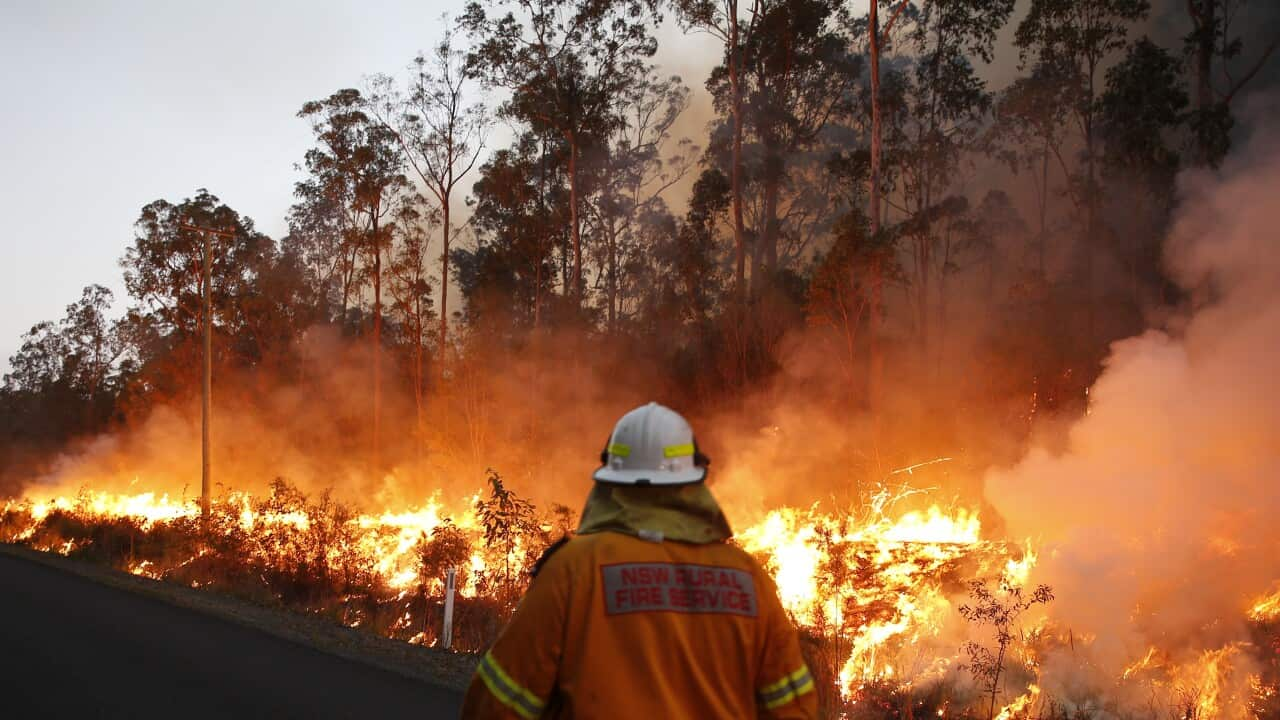Crafting Your Residential or commercial property's Security: A Detailed Bushfire Management Plan Overview
Crafting Your Residential or commercial property's Security: A Detailed Bushfire Management Plan Overview
Blog Article
Crucial Tips for Bushfire Management to Make Sure Fire Protection

Recognizing Bushfire Danger Levels
Understanding the differing degrees of bushfire danger is essential for efficient planning and preparation in mitigating prospective dangers to homes and lives. Bushfire risk levels are generally classified based on elements such as climate condition, fuel schedule, topography, and historic fire behavior. By comprehending these risk levels, communities and people can proactively implement strategies to minimize susceptability and improve strength despite potential bushfire occasions.
The very first degree of bushfire danger is low risk, where the likelihood of a bushfire taking place and causing substantial harm is very little. Risky degrees indicate a substantial threat, with problems conducive to quick fire spread and severe fire actions.
Understanding these bushfire threat levels makes it possible for stakeholders to tailor their preparedness and action actions appropriately, making certain a positive and reliable method to bushfire administration.
Establishing a Defensible Area
Effective bushfire management starts with developing a defensible space around properties to enhance defense versus prospective fire risks. A defensible room is a barrier zone that creates an obstacle between a framework and the bordering flammable greenery. This area functions as a vital line of defense, offering firemans a safe area to operate and assisting to lower the risk of a fire spreading to the building.
When creating a defensible room, it is crucial to take into consideration the layout of the residential property and the bordering landscape. Clearing greenery, specifically highly flammable plants, within a particular radius of the residential property can help stop the quick spread of fires. In addition, keeping a well-irrigated zone around the property can additionally boost its defensibility.
Regular maintenance of the defensible area is essential to ensure its efficiency. This consists of cutting looming branches, removing dead greenery, and maintaining the area free of particles. By spending time and effort into establishing and preserving a defensible space, property owners can dramatically enhance their chances of securing their homes and properties throughout a bushfire.
Implementing Fireproof Landscaping
When making landscapes to alleviate the danger of bushfires, incorporating fire-resistant aspects is crucial for enhancing residential or commercial property security and minimizing fire hazards. Select plants with high wetness content, reduced oil content, and minimal dead greenery to minimize the risk of fire spread.

Producing an Emergency Discharge Plan
Developing an extensive emergency evacuation strategy is crucial for making sure the safety and security and health of people during prospective bushfire incidents (BAL Report). An efficient emptying strategy need to detail clear procedures to follow in case of a bushfire hazard, including marked discharge paths, assembly points, and communication methods
To start creating an emergency discharge strategy, it is important to examine the certain threats and vulnerabilities of your location. Determine numerous emptying routes that result in secure locations far from the fire, thinking about aspects such as terrain, roadway access, and potential threats. Develop interaction channels to alert citizens of an approaching discharge, making use of approaches such see here now as alarms, message notifies, or door-to-door notices.
Routinely testimonial and practice the discharge plan with all citizens or neighborhood members to make certain every person understands their roles and responsibilities. Conduct drills to test the effectiveness of the strategy and make any kind of needed adjustments. By having a well-prepared discharge plan in place, you can boost the possibilities of a orderly and safe discharge throughout a bushfire emergency situation.
Keeping Fire Security Equipment
After developing a comprehensive emergency situation emptying plan for bushfire occurrences, it is important to prioritize the normal maintenance of fire safety tools to make sure ideal functionality and preparedness. Routine upkeep of fire safety tools such as fire extinguishers, smoke detectors, emergency alarm, and sprinkler systems is essential in safeguarding lives and home throughout a bushfire. When required., performing routine evaluations, screening, and maintenance of these gadgets by certified specialists is vital to assure they are in working order.
Fire extinguishers must be examined on a regular basis for stress levels, noticeable damage, and appropriate capability. By diligently preserving fire security tools, individuals can improve their preparedness and reaction abilities in the event of a bushfire.
Conclusion
To conclude, effective bushfire administration entails you could try this out comprehending danger levels, producing defensible spaces, carrying out fire-resistant landscaping, developing discharge strategies, and maintaining fire safety tools. By adhering to these crucial ideas, individuals can make sure much better fire defense and safety and security for their communities and homes. It is essential to focus on positive steps to mitigate the risks related to bushfires and to be gotten ready for emergency situations.
By recognizing the subtleties of bushfire risk degrees, developing defensible areas, carrying out fire-resistant landscaping, developing thorough discharge strategies, and making certain the maintenance of fire security devices, people and areas can considerably boost their strength versus the ravages of wildfires - Bushfire Risk. These tips are not only critical for securing against immediate fire risks but additionally for promoting lasting fire defense techniques that can make a substantial difference in the face of rising bushfire threats
Risky degrees signify a substantial risk, with problems conducive to rapid fire spread and severe fire actions. Normal maintenance of fire safety and security tools such as fire extinguishers, smoke detectors, fire alarms, and lawn sprinkler systems is essential in securing lives and residential property during a bushfire.In verdict, reliable bushfire administration involves comprehending risk levels, producing defensible rooms, applying fire-resistant landscaping, creating evacuation plans, and keeping fire safety and security equipment.
Report this page